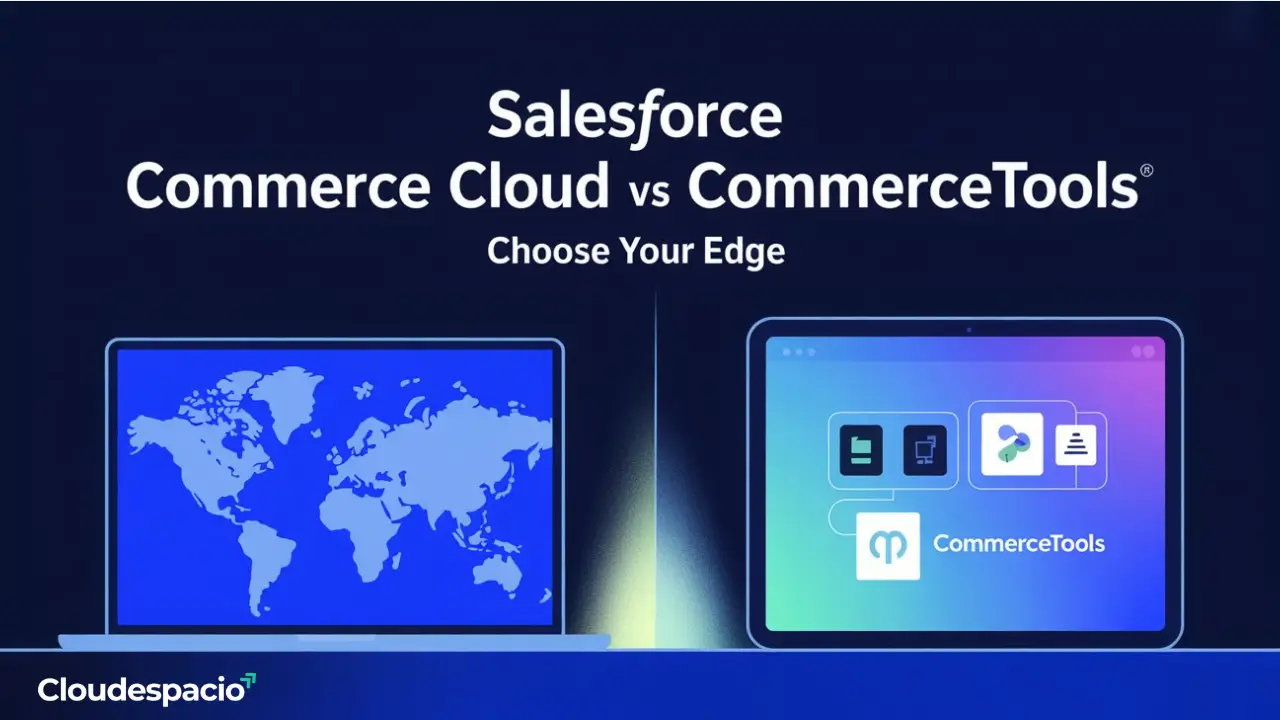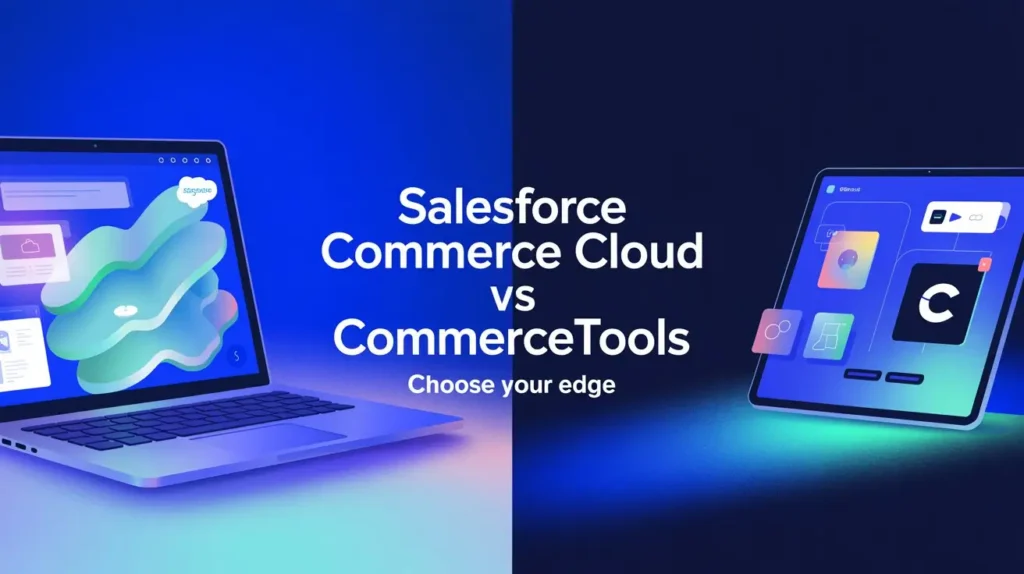


For ecommerce leaders and CEOs, selecting the proper digital commerce platform is no longer only about managing an internet store. It is about laying the groundwork for long-term scalability, customer interaction, and growth. Salesforce Commerce Cloud and Commercetools are two systems sometimes discussed in 2025. Though both are good players, their ideologies vary greatly.
While Commercetools is an API-first platform created for flexibility, Salesforce is meant as a full company ecosystem. Knowing what each offers, their advantages, limits, and costs will enable leaders to select the best course of action for their company. so lets compare Salesforce Commerce Cloud vs Commercetools.
The greater Salesforce family includes Salesforce Commerce Cloud. It is a cloud-based business platform that interfaces with marketing and service solutions, manages online sales, and connects with Salesforce CRM. Global companies seeking stability, customization, and a consolidated customer view drove its development.
The headless, API-first commerce system is Commercetools. It provides independent APIs for product catalogue, checkout, and promotions rather than one entire package. Companies might create their own solutions or integrate these services with other outside resources. This appeals to technology-driven companies who want total flexibility to create their own systems.
Simply said, Salesforce is a organized ecosystem that values integration; Commercetools is a flexible engine that values personalization.
Looking at traits reveals a distinct approach difference. Built-in tools in Salesforce Commerce Cloud include Einstein AI for personalization, global currency and language support, merchandising, analytics, and tight connection with Salesforce CRM. Providing several features in one location, it lessens dependence on outside applications.
The modular approach of Commercetools is Every feature is offered as an API, therefore companies may select what they require and integrate it with their chosen outside tools. This way offers flexibility but needs excellent technical leadership.

On both platforms, there are defined viewers. Large businesses already utilizing Salesforce tools find the most benefit from Salesforce Commerce Cloud. Global stores, premium brands, and businesses with extensive catalogs seeking consistent performance and great personalization fit it perfectly. Companies that have several locations and high standards for customer involvement usually choose Salesforce since it lowers risk and makes things easier.
Every instrument presents drawbacks and advantages that CEOs must consider painstakingly.
Global scalability, dependable enterprise support, and powerful artificial intelligence features abound on Salesforce Commerce Cloud. Deeply connects with CRM, marketing, and service data. Higher prices, dependence on certified partners, and a more difficult learning curve are among the constraints.
Commercetools offers unrivaled control, flexibility, and conformance with MACH ideas. It enables companies to innovate and circumvent vendor lock-in. But it calls for more sophisticated integration management, longer deployment schedules, and robust technical teams.
One of the most crucial aspects to take into account for expansion is scalability. Designed to simply manage worldwide activities, Salesforce Commerce Cloud. It is a preferred choice for businesses with a worldwide presence since it accepts several currencies, languages, and compliance rules. Its infrastructure guarantees constant performance over markets and stability.
Though it travels a different path, Commercetools is also excellent in scaling. Its headless construction lets companies scale every service independently. Independently of altering the whole system, a brand may increase checkout, search, or product catalogue. For omnichannel approaches on web, mobile, and even in-store experiences, this is quite effective. The trade-off is complexity: the more services you scale, the more orchestration is required.
Different structural prices affect how businesses budget.
Usually between one and three percent, Salesforce Commerce Cloud levies a percentage of gross merchandise value plus setup and partner fees. For companies, this usually feels like a large initial investment, but it increases in tandem with income. Leaders consider it as a cost equaling corporate performance, while also offering stability, artificial intelligence tools, and corporate assistance.
Commercetools charges according to a usage-based pricing plan. Costs are connected to storage, API calls, and traffic. Companies who want to pay just for what they use find it fair and transparent.
Every platform’s long-term value is determined by its environment. The larger Salesforce system includes Salesforce Commerce Cloud as part of it. It works perfectly with CRM, Service Cloud, and Marketing Cloud, so businesses can see the whole customer journey from sales to service. For international businesses, this simplifies the administration of several systems and brings stability.
Commerce tools abides in the realm of composable commerce. It works with outside tools for payments, search, personalisation, and content. This adaptability lets companies choose the ideal approach for every industry. Strong IT teams are needed to handle several integrations, hence governance is the problem. While Commercetools offers several options to increase flexibility, Salesforce simplifies things with one ecosystem.
The discussion around Salesforce Commerce Cloud vs Commercetools centers on which best fits business objectives rather than which is better generally.
Enterprises looking for integration, stability, and worldwide reach should pick Salesforce Commerce Cloud. It works for companies that are already using Salesforce tools and for companies that want one system to handle the whole customer journey.
Businesses seeking flexibility, innovation, and total control of their e-commerce systems should select Commercetools. For companies with competent developers and a will to create composable solutions, it is effective.
The choice relies on values. If your main interests are integration, customer understanding, and worldwide stability, Salesforce is the best option. Should flexibility, composability, and experimentation be your top priorities, Commercetools is the superior choice. CEOs have to match the benefits of the platform with their long-term growth strategy.

Cloudespacio, headquartered in Singapore, is a prominent independent Salesforce and leading consulting firm, dedicated to prioritizing client satisfaction.
Copyright © 2025 All Rights Reserved. Designed by Navpatra.

If you have a project in mind, let’s talk!